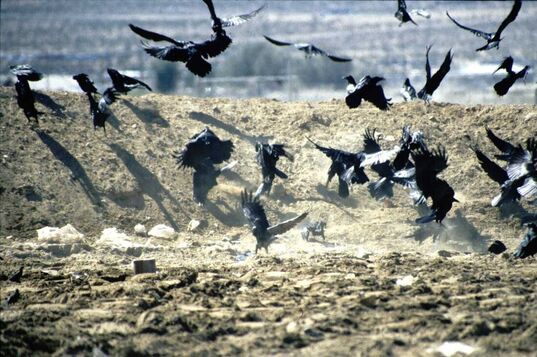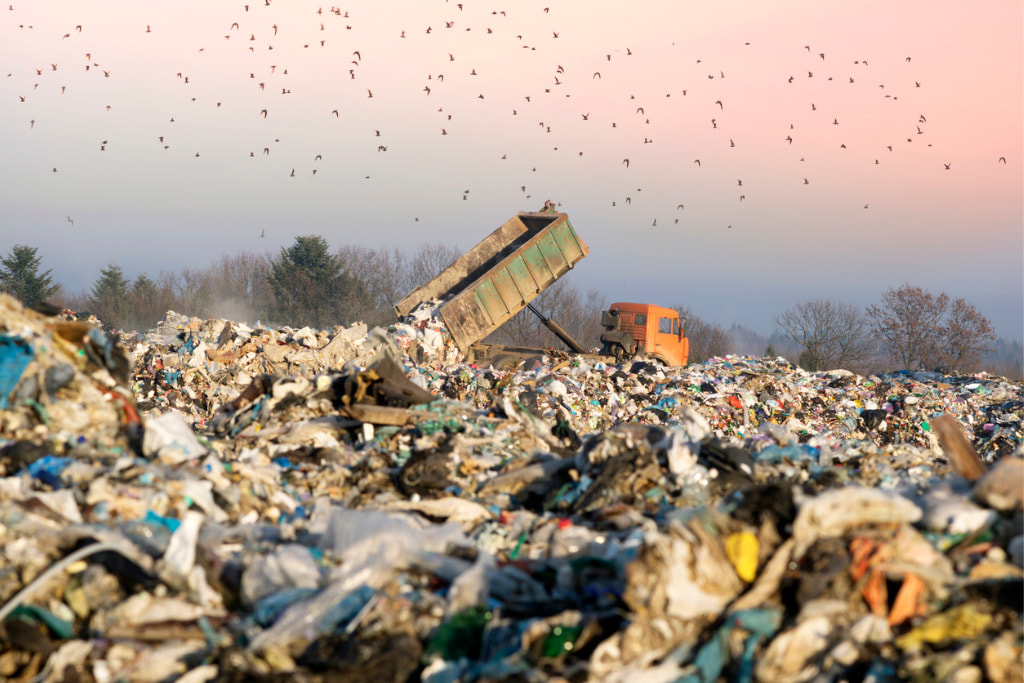 In many developing areas, the issue of solid waste management in cities is rapidly becoming an environmental and economic issue as cities are centers of garbage production. Tons of municipal solid waste, mainly comprising of nonhazardous garbage, and trash from homes, institutions, and industrial facilities often end-up in urban landfills which might as well be the Bat signal lighting up the skies of Gotham for hungry animals. Landfill construction for solid waste disposal not only removes suitable habitats for certain wildlife species but also enhances certain other human-wildlife interactions. Such interactions may have both positive as well as negative impacts on wildlife populations. Waste landfills are reliable and rich sources of food, approximately one third of our left-over food finds its way to a landfill and food does not stop being food once we throw it out. These man-made habitats can support large populations of different species of wildlife. Unusually high population inflations of few opportunistic species of birds can impose a severe impact on the overall ecological balance. With the huge issue cities are having with crow populations roosting in many downtown areas they are often attracted to these landfills during the winter months by the thousands. Also, when food is scarce in the urban agricultural areas due to frozen fields and picked over crops many species of gulls will use landfills as well. And if you have ever had the pleasure of visiting a landfill in the winter it can be summed as a scene out of an Alfred Hitchcock movie, The Birds. This is also becoming an issue disrupting the migration of some species of birds, for example one population of white storks is deciding to stay behind, seemingly canceling its migratory flight south in favor of gorging on rotting food found in Portuguese landfills. On the other hand, with the trending decline in many natural habitats, human modified habitats such as landfills are increasingly becoming important habitats for numerous avian species. As birds adapt to an environment increasingly dominated by humans, their social behavior and demography is likely to change. As major changes in waste management and disposal practices such as changing from landfilling to incineration can potentially have sizeable impacts on bird populations depending on landfills, better understanding of the extent and patterns of daily use of landfills by birds and their seasonal dynamics in abundance is incredibly important. Such ecological information would be useful for regulatory agencies and local governments in decision making pertaining to the management of landfills. However, limited or no studies in literature have investigated the effects of landfills on the spatial and temporal distribution of birds and other wildlife species foraging at landfills. With municipal waste expected to double by the year 2025 it is safe to say that not only is this a problem today, but it will certainly be an increasingly huge problem for the future! Only time will tell if the garbage is actually “good” for the birds, as dump-diving could lead the animals to accidentally ingest all sorts of plastic, toxins, and other hazardous material. Similarly, studies have yet to be conducted on the potential ecological impacts of the birds’ ditching their southern migration. Loomacres - 800-243-1462 Bringing Wildlife Management to a Higher Level ©
1 Comment
|
Sales & Marketing
|

 RSS Feed
RSS Feed